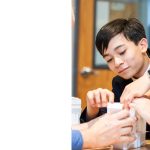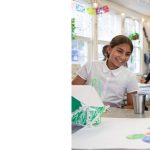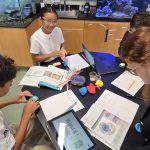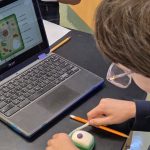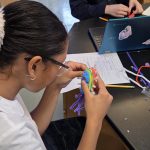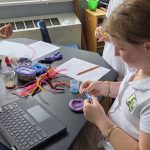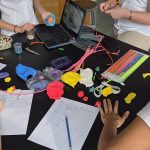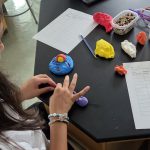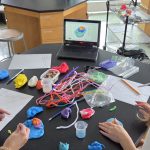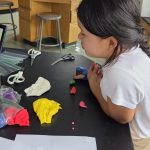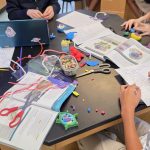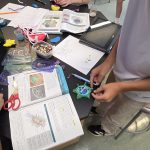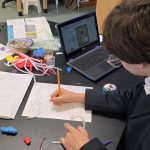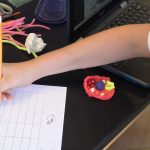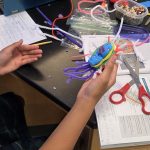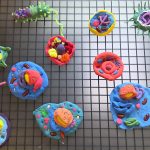3-D Cell Models
Posted by Joshua Bartosiewicz- Finished cell model.
- Building animal and plant cells.
- Wrapping the cell wall around the outside of the plant cells.
- Using pipe cleaner as the flagellum for a prokaryotic cell.
- Building an animal cell.
- Filling in the data table which serves as a key for their models.
- Making organelles for animal cells.
- More animal cells!
- Organization in chaos.
- Analyzing their next step.
- Molding specific organelles for their cells and filling in their index.
- Reviewing his model with the diagram.
- Adjusting his plant cells model.
- Making an animal cell.
- Prokaryotic cell.
- Constructing cell models.
- A finished animal cell model.
- Class models!
Our 7th graders are learning about all things related to cells lately in science class. Following our microscope lab where we identified what makes something living vs nonliving based on whether or not the object had cells; the 7th graders constructed 3-D cell models of either an animal cell, a plant cells or a prokaryotic cell (a unicellular organism). When building the 3-D models students used a diagram of the cell of their choosing to make the model as accurate as possible. The objective of this lab was for the students to gain a better understanding of the cell structure and functions of each organelle. Students also learned the pros and cons of a 3-D model as well as for 2-D models.
← A Magical Day at the Florence Griswold Museum In the Hall of Mountain King! →




